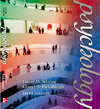Visual Memory Imagine you are out walking on a cloudy day. All around you, the land
is flat and covered with snow, and you cannot see your house. How do you
find your way home? If you are a native of Northern Alaska, you may simply look at a mental
map. Westerners who explored the Arctic in the nineteenth century were
astounded by sophisticated 3-D maps Native American Inuits drew by hand.
Modern researchers have tested Inuit children by having them look at
pictures, then draw them from memory. Arctic natives remembered the
relationships between parts of the picture better than Caucasians. In
other words, they had excellent mental spatial maps. Both sexes had
equally good visual memories. (McShane & Berry, 1988: McArthur, 1978:
Kleinfeld, 1971) There are many explanations for the Inuits' visual ability.
Traditionally, Inuits have hunted for food on monotonous flat tundra and
sea-ice, where a good memory for visual detail is important for
navigation. Over time, there may have been genetic selection for people
who have good visual memory. On the other hand, there are also strong
social motivations to remember where you are. In the past, young hunters
who got lost were publicly ridiculed and scorned. |



 2002 McGraw-Hill Higher Education
2002 McGraw-Hill Higher Education

 2002 McGraw-Hill Higher Education
2002 McGraw-Hill Higher Education